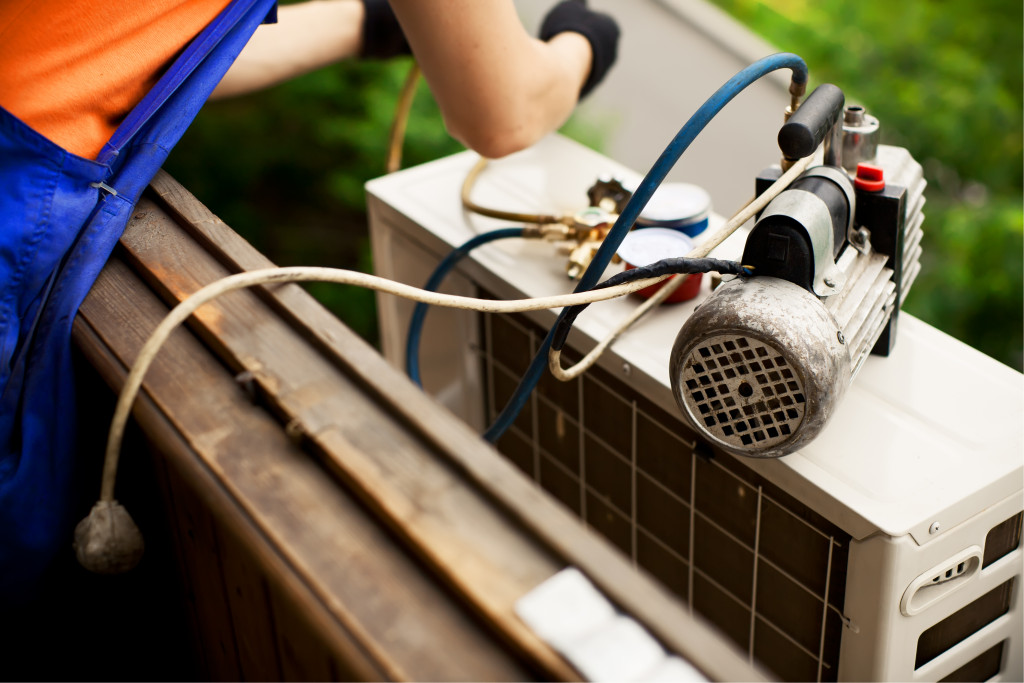Our need to meet energy demands through the years has come with the consequence of destroying the planet due to the production of greenhouses gases. Going green through home energy efficiency will not only save you bills but will protect the environment too.
According to the Environmental Protection Agency, residential and commercial sectors are responsible for almost half of U.S. energy consumption. There are several ways to get green energy flowing into your home, even with minimal change like changing a light bulb can make a big difference.
Considering an alternative energy source can also improve your home’s adaptability when power outages occur since some panels have a way to generate their own electricity. You can also be able to improve your home’s resale value since it increases when it owns clean features like a geothermal heat pump.
Alternative energy sources
There are several energy sources that are no threat to the environment and human health. Here are some:
Geothermal
Geothermal energy works by integrating heat pump tech with the consistent temperature of the earth, harnessing heat energy beneath the earth’s surface. It relies on a pump to circulate water through pipes underground which would require drilling deep into the earth’s surface. They require much less energy and can be twice as efficient as an air conditioner. The energy-saving perks from this source will require a high installation cost and good soil conditions within your area.
Residential geothermal systems have two options: a closed-loop geothermal heat pump which uses a series of pipes installed underground that circulate water, or an open-loop heat pump which will require a well to function properly.
Solar

Solar energy is considered to be the cleanest and most abundant renewable energy source. It refers to using solar photovoltaic to create electricity. In many areas, solar panels can produce enough power to cover all your household’s electricity needs. Although it has a high initial installation cost, you’d see a return on investment and is capable of storing excess energy.
The most common method of using energy is installing rooftop solar panels. There is also a new tech called solar shingles which are smaller solar panels that are shaped like a regular asphalt roof shingle and are best used with a solar inverter. Both solar panels and solar singles can cost you quite an amount but can deliver the same results in producing energy.
If powering your entire home is not feasible with the solar panel and shingle, you can start small by trying a solar oven which works by trapping sunlight to heat food. You can build your own using common materials or just buy one.
Wind
For you to opt for wind energy and install a small wind system, be sure that your location has high wind power. You can install a small wind turbine attached to your roof or on a pole. It has limited maintenance and works well with all climates. Although it is cheaper compared to solar panels, it can easily be damaged by lightning and if your area is not producing enough wind, no energy will be produced. Most manufacturers suggest that wind turbines are fitting for rural areas, especially with houses surrounded by at least an acre of land filled with trees.
More energy efficient
Due to the advancement in technology, we have more options for utilizing renewable energy. Energy-saving tools such as geothermal heat pumps are becoming more affordable to install at homes. An effective alternative doesn’t have to be an all-around home energy provider. You can choose which one will fit you best in the long run.
Fossil fuels such as natural gas, oil, and coal are burned at power plants to produce electricity. This causes them to produce greenhouse gases which cause global warming. By reducing the amount of energy, you use, there will be fewer fossil fuels burned.
Conserving energy isn’t limited to heat and electricity. You can also make green changes to your plumbing system through green plumbing or ecological plumbing which can help you conserve water and energy by using a variety of plumbing systems and methods such as low-flow toilets, showerheads, and tankless water heaters.
Air conditioning and heating produce almost half of your home’s annual energy use. There is solar air conditioning that uses hot water to cool your home, combining solar electricity and air conditioning. If you live in a location with a hot climate, you might tend to use air conditioning a lot. Solar AC works as well as a normal AC without having to rack up your bills.
There are many options for homeowners to shift to using alternative energy. Considering and making the shift is a good way to start your role with helping the planet and limiting the effects of global warming. Some systems that provide energy for an entire home are very expensive for a common consumer so better if you start small which is guaranteed to make a large impact if used consistently. It can still save you bulls and help you manage your monthly energy bills more.
